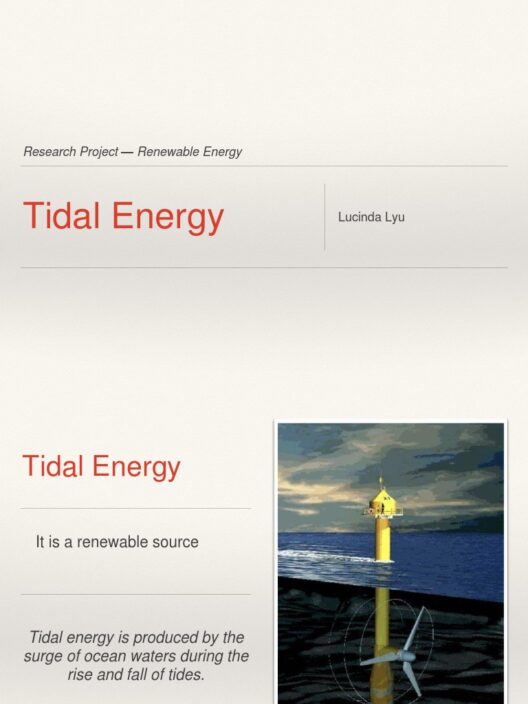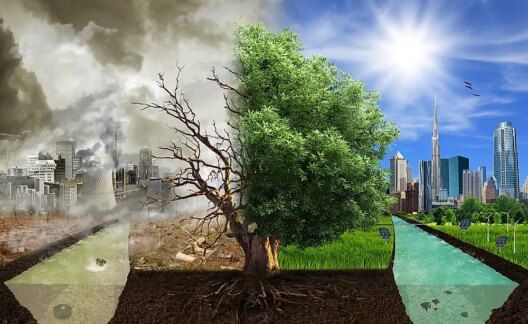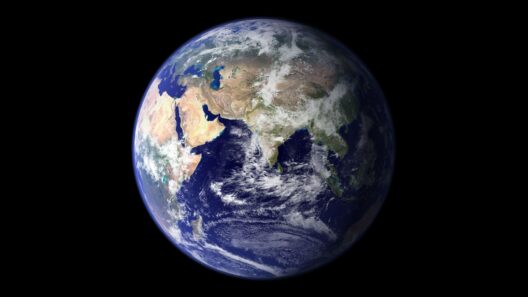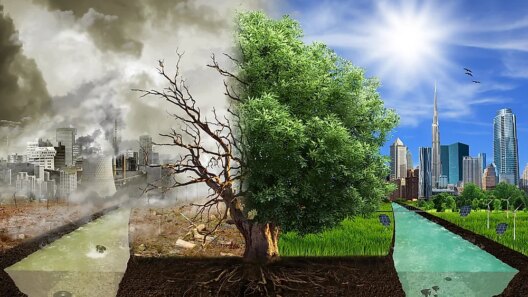The intricate relationship between climate change and extreme weather phenomena encompasses a myriad of complexities. Central to this discourse is the paradoxical nature of global warming, which is evidenced by its dual capability to orchestrate both severe droughts and catastrophic flooding. While these two climatic events may seem mutually exclusive at first glance, they are, in fact, manifestations of the same overarching climatic disruption—global warming.
The primary driver of contemporary climate change is the accumulation of greenhouse gases in the atmosphere, with carbon dioxide being the most prominent. Human activities, particularly the burning of fossil fuels for energy, deforestation, and industrial processes, have significantly accelerated the increase of these gases. As the concentration of greenhouse gases rises, the Earth’s average temperature simultaneously escalates, causing a cascade of alterations to weather patterns and hydrological cycles.
One immediate effect of rising temperatures is the enhancement of evaporation rates. When the sun’s radiance warms water bodies, the corresponding increase in evaporation leads to a greater amount of moisture being released into the atmosphere. Consequently, this augments the potential for precipitation. However, this does not equate to uniform rainfall distribution. Instead, it often produces erratic weather, where some regions are inundated with relentless downpours, while others languish in prolonged spells of aridity.
In regions prone to drought, the heightened evaporation exacerbates water scarcity. For instance, during a scorching summer, the soil moisture can evaporate rapidly, as can the moisture in water bodies. Such conditions not only threaten local ecosystems but also compromise agricultural viability. The implications for food security are profound, as crops wither under the relentless sun. Farmers face dire choices; they may turn to groundwater, often unsustainably, or abandon their fields altogether. The socio-economic ramifications are equally severe, leading to increased migration and intensified competition for dwindling resources.
Conversely, increased atmospheric moisture from enhanced evaporation can culminate in periods of extreme rainfall. This is particularly evident when warm air masses collide with colder air stability, creating conditions ripe for severe storms. Climate change propels this process by elevating the temperature of ocean waters, which serve as large reservoirs of evaporated water vapor. Warmer oceans breed more potent storms, leading to occurrences of flooding that devastate communities and infrastructure. Low-lying areas are especially vulnerable, with rising sea levels adding another layer of risk.
Moreover, the paradox manifests in the context of weather extremes becoming more pronounced. The Intergovernmental Panel on Climate Change (IPCC) has underscored that global warming will increase the frequency and intensity of both droughts and floods. This duality poses significant challenges for policymakers and disaster management agencies, who are often tasked with responding to anomalies that stem from the same climatic phenomenon.
Furthermore, these extreme weather events cannot be viewed in isolation. Their implications often resonate across diverse ecological and social dimensions. Biodiversity suffers as habitats are either inundated or parched. Plant and animal species are pushed to adapt rapidly or face extinction. Aquatic ecosystems experience salinity increases due to flooding, further complicating the survival prospects of freshwater species. In the human domain, the impacts are equally far-reaching, touching upon water conflicts, health crises, and economic disparities.
The psychological dimension of these climatic extremes is also noteworthy. Communities affected by drought may experience prolonged stress and anxiety, compounded by the uncertainty surrounding crop yields and economic viability. In contrast, those in flood-prone areas experience immediate trauma and destruction, leading to significant mental health issues in the aftermath of such disasters. In both scenarios, a sense of security is irrevocably altered, highlighting the interconnectedness of environmental stability and human well-being.
Transitioning to a sustainable framework is essential if society aims to mitigate these extremes. Adaptive strategies must be employed at both local and global levels. For agriculture, the adoption of water-efficient farming techniques and drought-resistant crops can play a pivotal role. Similarly, urban planning needs to account for the risks posed by flooding, investing in infrastructure that can withstand heavy rainfall and protect communities.
Policy frameworks must evolve to prioritize resilience in the face of climate change. This means acknowledging the dual threats posed by droughts and floods and integrating climate adaptation strategies into development planning. Investment in renewable energy sources can also reduce reliance on fossil fuels, thus slowing the progression of global warming and its devastating impacts.
In essence, the climate paradox reveals an urgent narrative about the intertwined fates of humanity and the planet. Understanding that global warming can incite both drought and flooding is crucial for crafting effective responses to climate-related disasters. It urges an immediate re-evaluation of how societies engage with the environment. Ending the cycle of detrimental practices and fostering a culture of sustainability is not merely prudent; it is imperative for the continued vitality of ecosystems and human societies alike. The road ahead may be fraught with challenges, but through informed action and collective will, a balance may yet be restored.







